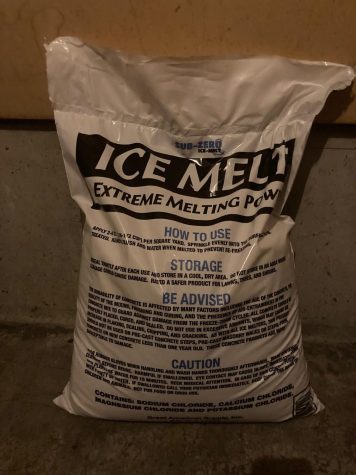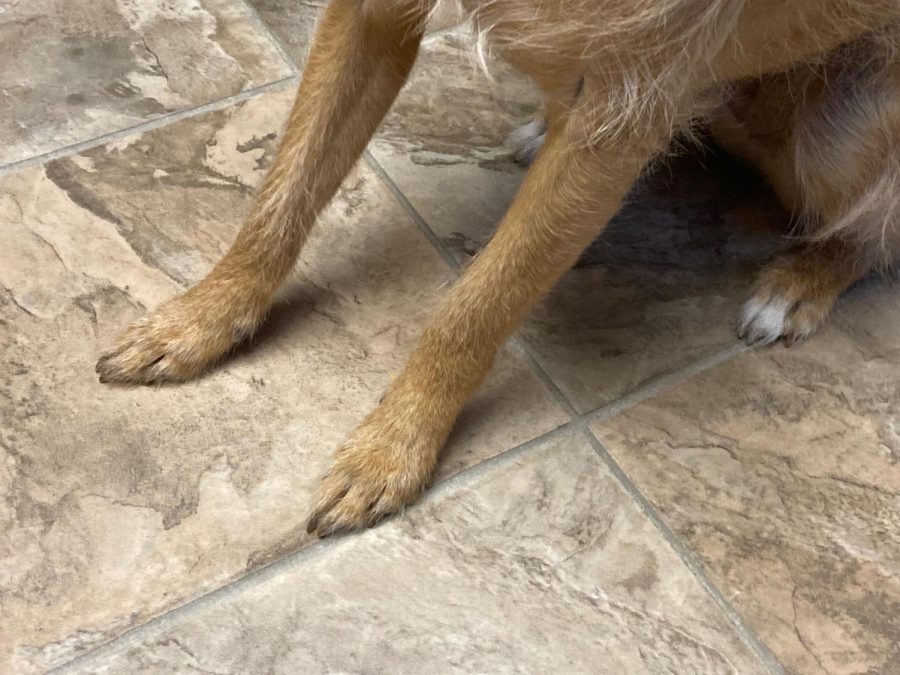The Pain Right Under Our Paws
When winter begins, snow falls and most people can slip from the ice on the roads which is easily handled with rock salt, but rock salt isn’t doing any good for your dog.
Animal paws from a dog
“The tiny granules can irritate the pads of his feet, or cause harmful mouth and stomach issues if ingested,” says the article “The Dangers of Rock Salt on Dogs’ Paws.”
Dogs can lick their paws after they play in the snow with salt which can cause many problems with their stomachs. One being hypernatremia.
“This means just a lot more salt in the blood and things…we term it as salt poisoning,” says Dr. Jake Thrasher, a veterinarian who works at the Banfield Pet Hospital in Silverdale.
Hypernatremia is one of the few serious health consequences dogs can be affected by from salt but what is it?
Thrasher said that excessive sodium “can affect the blood-brain barrier.”
“A dog’s paw pads could become sore from repeatedly stepping on rough salt crystals. Or, a sharp edge could cut into a dog’s paw, resulting in a laceration and bleeding. Additionally, salt on dog’s paws can cause excessive dryness, cracking, or even burns of paw pads, especially with prolonged or repeated exposure.” said the article Is Salt Bad for Dogs’ Paws? The Dangers of Ice Melts | Bond Vet. Dogs need special care if their paws take too much damage and may need to see a veterinarian if not kept in check.

“Dogs with long hair dry that dry out in between the pads because their hair can hold on to that wet so…” Tante Baker, an area dog trainer said. The snow can get stuck inside the hair or fur of a dog. What else can solve this problem?
“Probably get booties… probably find something that’s not salty,” said Frank Pizanti says, a high school student and dog walker. Dogs should stay away from things that are too salty and can cause indigestion issues.
Some solutions are entirely removing it from the paws entirely. Not only do they look good on your dog but boots protect your dog from salt on the ground. The same principle applies to paw balm. This not only soothes the paws but also creates a layer of protection for your dog while you take it for its walk.
Second, shovel the area before you walk your dog. This will remove snow and salt away from your walking path and negate the problem. Also, take shorter walks. These will limit the time spent on the ground and lessen the chances of long exposure to salt and snow for your dog, including in areas where you cannot shovel.
Another, regular grooming for a dog will also help by stopping snow from being trapped in the dog’s fur and allowing them to move gracefully through the snow without it catching in its fur. Between professional grooming sessions, cleaning paws and fur after walks will stop any salt residue from staying on the dog which will stop the irritation inside the house.

Finally, less salty foods for your dogs may be necessary. This will cause them not to eat salt, reducing the chances of many problems that occur when there is salt on the ground. “The occasional french fry is fine,” says Pizanti. “Make sure it’s not too much under the table food.”
There are a few more ways, but these are some good ones. All of these are great ways to stop the irritation or worse from salt. Paws should be cleaned regularly and kept in check, and by doing these simple things it can cause your dog to be much happier.



